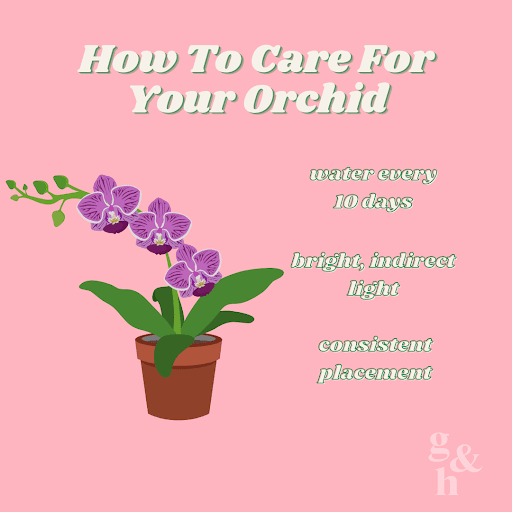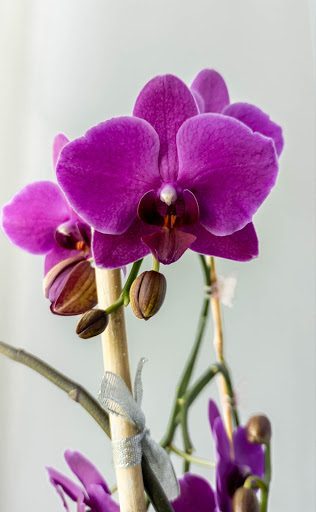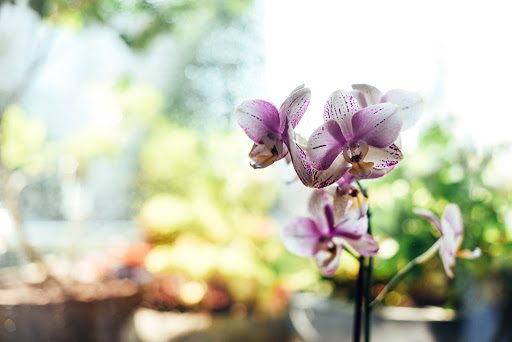
Orchids have a special place in the limelight during springtime. As a widely-available and visibly pleasing flower, they are a mainstay of kitchens and living spaces across the country.
The flowering plants are known for their fragile, giraffe-like stem and deep green leaves that produce a handful of delicately gorgeous blooms atop their upright stature. Their beauty doesn’t always come easily though. Orchids have gained notoriety for their fickleness. Although some instructions are provided when purchasing your orchid (usually on a small tag attached to the trellis or pot) these additional tips can help optimize your orchid’s bloom.
We’ve walked through the basic phrases and principles of plant care before in Garden & Health, and those same pillars apply to flower care too!
What Is An Orchid?
The first step to a healthy orchid is understanding the plant itself. There are over 30,000 species of Orchidaceae, originally native to Australia and Asia’s more temperate regions. It is a blooming flower traditionally symbolizing love and strength.
Orchids are not always in bloom and have long, dormant periods without flowers. It’s also important to understand orchids occur naturally as upward, vining flowers. This is why they are commonly propped up with a trellis to guide growth.

When Will It Bloom?
Most orchids bloom in winter and spring, depending on the type, and an average bloom lasts about four weeks. For the rest of the year, your orchid will be dormant, but alive and growing. This does not mean you are doing anything wrong!
How To Take Care of Them In Bloom
During the blooming period, you can take care of your orchid by placing it in a spot with bright, indirect sunlight (reminder: this means if the flower had eyes, they could see the blue of the sky but not the sun itself).
You should water your orchid every seven to ten days. This is a rough estimate and varies based on the conditions. Orchids do not require a lot of water, and this is a common misconception! Store-bought orchids are susceptible to root rot — when the soil does not fully dry between waterings — because of how they’re potted. While you should never repot a blooming orchid, do be conscious of this. Some people say using an ice cube to water the flower works better. This may be true, but really it’s because it limits the amount of water that’s gradually dispersed to the roots. Always err on the side of underwatering your orchid (we’re talking a couple of tablespoons).
Keep your orchid away from vents, drafty windows, or artificial heat sources. Do not move your orchid while it is in bloom.
How To Take Care of Them After Bloom
Once an orchid has flowered, the main objective is to keep it alive until the next bloom. During this time, you should continue to water the plant every seven to ten days.
After bloom, you can repot your plant to a more suitably-sized pot. Do not go more than one or two inches up in size, and pack the soil lightly. Leave it uncovered to promote better drying out between waterings. Covering soil in moss increases the likelihood of mites and root rot.
You can also prune your flower’s older spikes by the base after bloom to improve its appearance.
When an orchid is not in bloom, you can move it to a different location, but be sure there is still adequate light. Do not move the plant frequently, but it can be done if needed.
Takeaway
Lots of people will say there are “hacks” to keeping orchids alive, but really it comes down to some good old TLC and more than anything, consistency!





